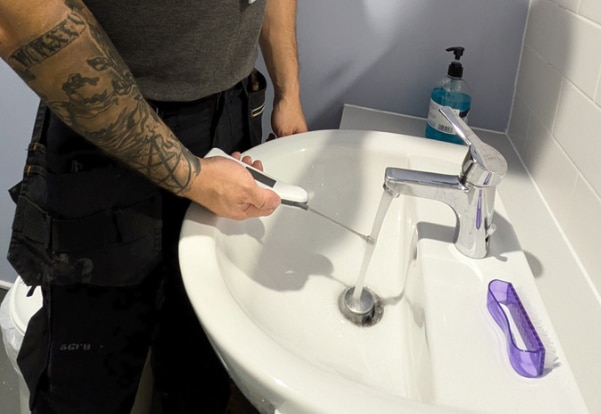At a glance
Cold water storage tank replacement is carried out to maintain water quality, system efficiency, and regulatory compliance. Over time, tanks can suffer from corrosion, leaks, or contamination. Replacing the tank involves removing the old unit, installing a new, approved model, and ensuring minimal disruption to water supply. Proper planning ensures safety and long-term reliability.
The challenge
A Facilities Management company responsible for a multi-tenanted high-rise building contacted Primary Water Solutions (PWS) following an internal inspection that revealed black spots on the walls of a cold-water storage tank. Concerned about potential contamination, they requested expert guidance. Primary Water Solutions conducted a detailed site investigation, reviewing the building’s water hygiene management programme and inspecting the tank itself. The inspection revealed that the tank’s internal gel coat had deteriorated, resulting in osmotic blistering and black spore mould growth – identified as the black spots on the tank walls. This degradation posed a risk to water quality and overall system hygiene.
The solution
Primary Water Solutions proposed two viable, compliant solutions:
Tank replacement
Full tank replacement with a like-for-like model based on calculated water usage.
Polyurethane coating
Application of a WRAS-approved, solvent-free polyurethane coating.
Both options offered a 10-year guarantee and were fit for purpose. After a detailed consultation, the client opted for a full tank replacement to meet a strict two-day installation and commissioning window. This approach ensured no disruption to the building’s water supply. Primary Water Solutions handled the specification of both solutions, providing the client with informed choices based on operational needs rather than cost alone. As it turned out, the replacement option also proved to be the more economical of the two.
The outcome
The client received a fully functional, hygienic cold water storage tank with no downtime in water supply. The project reinforced tenant confidence in the building’s facilities management and supported the FM company’s future contract retention through demonstrable reliability and swift resolution.


